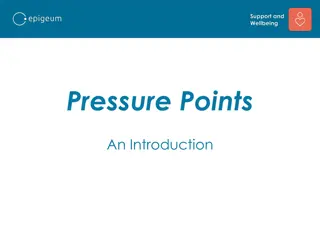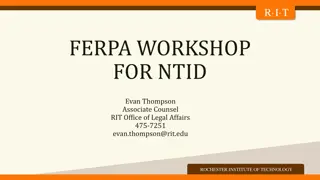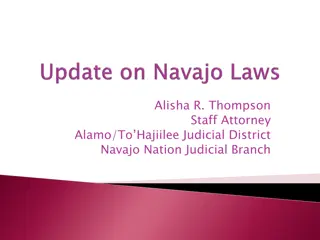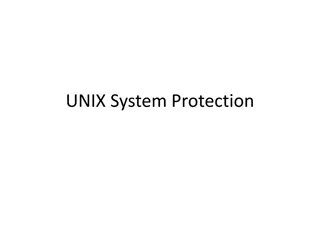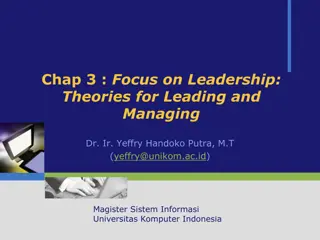Exploring Optical Potentials and Resonances at Lower Energies
Investigating the accuracy of common approximations in linking optical potentials to resonances at lower energies. The study focuses on neutron reactions with 14N as a test case, transitioning from R-matrix theory to Hauser-Feshbach models and evaluating known levels and level densities. Key topics include reproducing optical results using R-matrix parameters, analyzing neutron total cross-section data, and connecting widths with optical potentials through various theoretical approximations.
Download Presentation

Please find below an Image/Link to download the presentation.
The content on the website is provided AS IS for your information and personal use only. It may not be sold, licensed, or shared on other websites without obtaining consent from the author. Download presentation by click this link. If you encounter any issues during the download, it is possible that the publisher has removed the file from their server.
E N D
Presentation Transcript
Linking optical potentials to resonances at lower energies Checking the accuracy of common approximations Ian Thompson INDEN meeting. June 20, 2022 LLNL-PRES-832997 This work was performed under the auspices of the U.S. Department of Energy by Lawrence Livermore National Laboratory under contract DE-AC52-07NA27344. Lawrence Livermore National Security, LLC
Summary Neutrons + 14N reactions as a test case Known levels and level densities Going from R-matrix theory to Hauser-Feshbach models How to check the approximation used Try making R-matrix parameters to reproduce optical results, at least in middle range when resonances overlap more. 2 LLNL-PRES-832997
Known levels in n+N14 = N15* reactions Known levels from RIPL3: 15N* levels for incident neutrons n, p and channels near. Many gamma decays from excited states. Needs a new evaluation! 3 LLNL-PRES-832997
Neutron total cross-section data from EXFOR Line from ENDF/B-VIII.0 Pronounced resonances < 4 MeV. Smoother > 4 MeV: unresolved resonances with higher densities Cannot search to fit individual resonances to this data > 4 MeV. 4 LLNL-PRES-832997
Level Densities: levels per MeV RIPL3 levels for N15* as on level diagram. 5 LLNL-PRES-832997
R-matrix parameters 1. Diagonalize Hamiltonian inside R-matrix radius ? (with fixed ?/? to make orthonormal basis). 2. Energy eigenvalues ?? for level ?. 3. eigenstate wave functions ???(?) 2 4. Wf values at ? = ?: ??? = 2 ?????(?) Called reduced width amplitudes 2??. Penetrability ?? = ? (??+ 5. Formal width ??= 2 ??? ?+) 6. Total width ?= ? ?? 6 LLNL-PRES-832997
Exact R-matrix theory 7 LLNL-PRES-832997
Single-level Breit-Wigner approximation (SLBW) 8 LLNL-PRES-832997
Connecting widths with optical potentials 9 LLNL-PRES-832997
Checking the approximation used 1. The Single-level Breit-Wigner approximation a) Check effects of off-diagonal terms b) Check neglect of interferences for diagonal terms 2. Check that the width-fluctuation correction ??? is near 1 in 3. Check conversion from optical |S |2 to transmission coef T 4. Check overall Hauser-Feshbach models give cross-sections close to those from R-matrix models, at least in some transition region when both should work ok. 10 LLNL-PRES-832997
First: Compare R-matrix with HF cross-sections Use a range of known levels from RIPL3 Total cross-section has many resonances. Preliminary R-matrix fit to make plausible distributions. Use Koning-DelaRoche global optical potential for n+14N Use YAHFC Hauser-Feshbach code to also predict cross-sections Compare: Total cross-sections for neutrons: reaction + elastic Transfer cross-sections to ? + 11B Transfers to excited state (measured by their gamma decays) 11 LLNL-PRES-832997
Hauser-Feshbach models 12 LLNL-PRES-832997
Hauser-Feshbach cross-sections (smooth!) Inelastic (n,n ) At higher energies even more inelastic channels. Fusion neutrons at 14 MeV will require all these inelastic channels and more ! 13 LLNL-PRES-832997
Hauser-Feshbach transfer cross-sections Transfers (n,a), (n,p), (n,t), (n,d) Many larger than (n,n ) Fusion neutrons at 14 MeV will require all these transfer channels and more ! 14 LLNL-PRES-832997
Hauser-Feshbach width-fluctuation corrections Dashed lines use WFC from Moldauer PRC (1976), NPA (1980). For neutrons, usually supposed to be small above 1 MeV, but here we see effects up to 9 MeV. Use WFC calculated factor in YAHFC 15 LLNL-PRES-832997
Generate R-matrix poles from optical potential and level densities Start from optical potential for projectiles n, p, (etc) Choose which nuclear excited states to include (x1, x4, , x12) Use a level-density to generate spacings D up to 12 MeV. Find partial widths by A: Or by method B:: Or Ap, Bp: reduced width amplitudes have gaussian fluctuations Generate discrete levels with above statistics (like Dicebox) Find exact cross-sections from R-matrix theory Compare with HF results after smoothing (e.g. 1 MeV Gaussian) 16 LLNL-PRES-832997
Reaction cross-sections from R-matrix method B N15n-x is n + + p + d + t Curves larger as more excited levels included. Seems to converge R-matrix poles only to 12 MeV 17 LLNL-PRES-832997
Comparing width methods A and B R-matrix A method: magnitude normal N(0,mean): Porter-T. R-matrix B method: magnitude fixed to mean, sign random Method A gives reaction cross section nearest to that of the optical potential. But strange short-coming at low energies. May be compound-elastic. R-matrix poles only to 12 MeV 18 LLNL-PRES-832997
Channel Comparisons: HF and full R-matrix (A,B) - (n, ) channel Most accurate are expected to be HF+WFC and Ap methods. These two (blue and black-dashed) agree the best, at least up to ~ 5 MeV. R-matrix A method: magnitude normal N(0,mean): Porter-T. R-matrix B method: magnitude fixed to mean, sign random 19 LLNL-PRES-832997
Channel Comparisons: HF and full R-matrix (A,B) - (n,n2) channel Most accurate are expected to be HF+WFC and Ap methods. HF and Ap methods (blue and black) agree the best, at least up to ~ 7 MeV. WFC does not have large effects here. 20 LLNL-PRES-832997
Summary Possible to compare full R-matrix and Hauser-Feshbach models in transition region of unresolved resonances Necessary to include all excited residual states up to incident energy. This is well-known for HF, but not so well for R-matrix. (Needed anyway to predict gamma production cross-sections) Makes large R-matrix model: I use tensorflow of GPUs. Demonstrate best comparison agreements when including Width-fluctuation corrections in HF (up to higher energies) Full Porter-Thomas statistics of reduced width amplitudes ???. These are well known for high-A targets, but here for N15 too. 21 LLNL-PRES-832997
Disclaimer This document was prepared as an account of work sponsored by an agency of the United States government. Neither the United States government nor Lawrence Livermore National Security, LLC, nor any of their employees makes any warranty, expressed or implied, or assumes any legal liability or responsibility for the accuracy, completeness, or usefulness of any information, apparatus, product, or process disclosed, or represents that its use would not infringe privately owned rights. Reference herein to any specific commercial product, process, or service by trade name, trademark, manufacturer, or otherwise does not necessarily constitute or imply its endorsement, recommendation, or favoring by the United States government or Lawrence Livermore National Security, LLC. The views and opinions of authors expressed herein do not necessarily state or reflect those of the United States government or Lawrence Livermore National Security, LLC, and shall not be used for advertising or product endorsement purposes.


